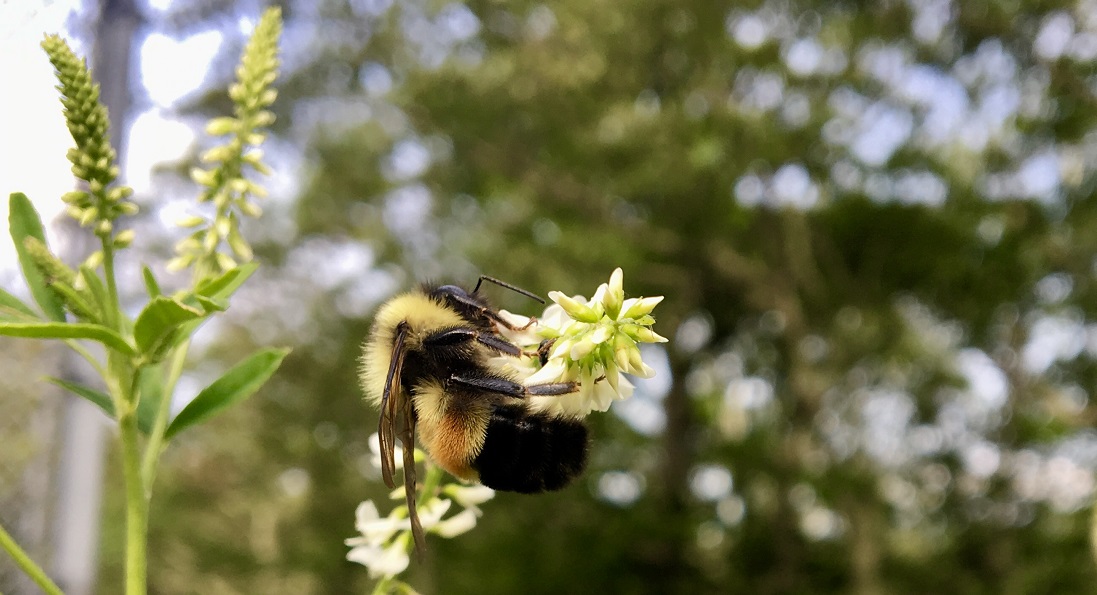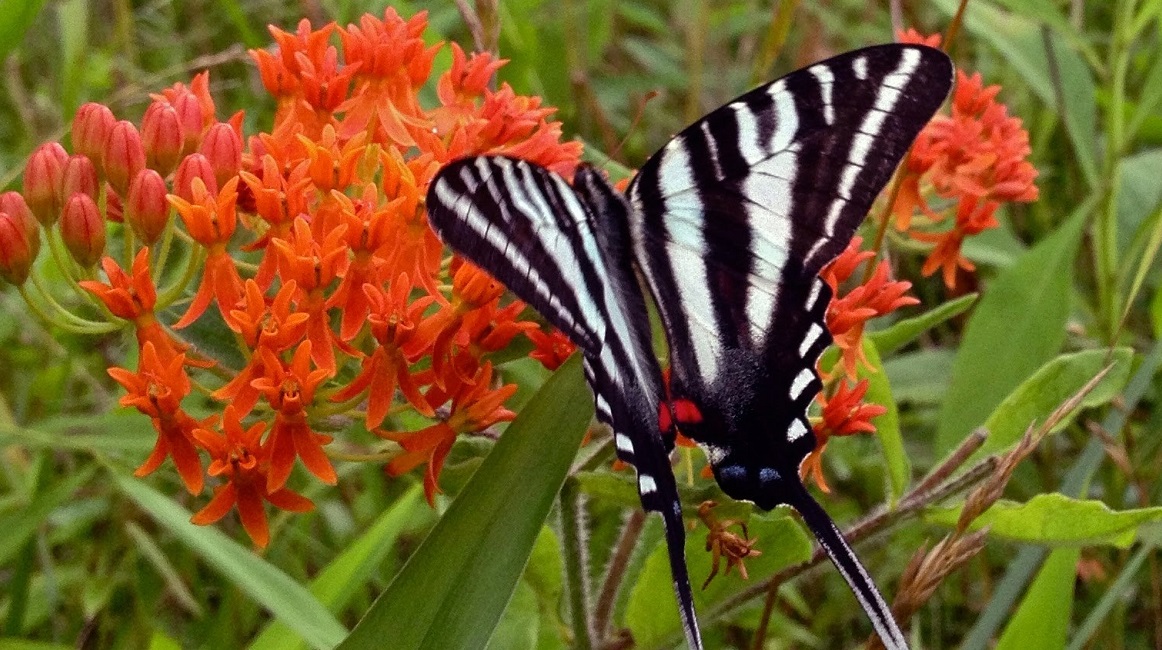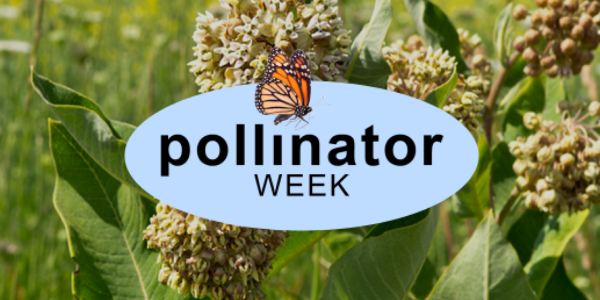
 Department of Conservation and Recreation
Department of Conservation and Recreation
Conserve. Protect. Enjoy.
 Department of Conservation and Recreation
Department of Conservation and Recreation
By Guest AuthorPosted June 22, 2021

The Rusty-patched bumble bee was listed as a federally endangered species in 2017. DCR Natural Heritage staff documented the species in Rockingham and Augusta counties in 2019.
You’ve probably heard that pollinator populations are declining across the globe. Like many environmental problems we face today, reversing this decline requires large-scale changes. It can be intimidating to think about all the threats facing pollinators, but, fortunately, there are ways you can help.
More than 75 percent of flowering plants and crops are pollinated by animals, according to the U.S. Fish and Wildlife Service. Bees, butterflies and hummingbirds are pollinators most familiar to us, but some species of moths, flies, beetles and bats also pollinate in their quest for food.
Pollinators are necessary to sustain the global food supply. They also support biodiversity as essential components of habitats and ecosystems that other animals need for life.
The Virginia Department of Conservation and Recreation is involved in the study of native Virginia bee populations through its Natural Heritage Program. The program recently produced the first comprehensive list of native bees of Virginia, which yielded 456 native species and 19 exotic species. About 20 of the native species are currently listed as globally or state rare.
About the Decline
According to the Center for Biological Diversity, more than half the native bee species in North America are in decline. One in four species is imperiled and at risk of extinction. In 2017, the Rusty-patched bumble bee became the first bee listed as a federally endangered species.
While the decline of the Monarch butterfly has made headlines recently, the Xerces Society estimates that 19% of butterflies in the U.S. are at risk of extinction.
Reasons behind these and other population declines are complex, but habitat loss, heavy pesticide use, climate change and urbanization have been identified as likely causes.
The good news is that those of us living in urban or suburban areas can help pollinators in big ways with a few actions at home.
Plant Native Species

Adding native plants to your yard can help boost pollinator health.
Planting plants that are native to your region is one of the most important things you can do to boost pollinator health. Native plants provide pollinators with the pollen and nectar they need, as well as habitat. Native plants also have the added benefit of making your yard or patio gorgeous.
Virginians have many resources to learn about regionally native plants, including the Virginia Native Plant Finder, the Plant Virginia Natives Campaigns, Virginia Department of Wildlife Resources and the Virginia Native Plant Society. Encourage your local garden center to stock native species.
Avoid Chemicals in Yard Care
If we use pesticides and herbicides in our yards, pollinators and beneficial insects may be exposed to toxins, even if unintentionally. Use natural methods or sprays of water to remove pests from plants. Diagnose pest problems carefully, or redefine your definition of a pest. Remember, your yard is a life-sustaining buffet for many important insects!
Give Pollinators a Place to Nest
Habitat loss is another major problem for pollinators, so give them a safe haven. Leave some bare spots in the yard for ground-nesting bees. Trees and shrubs are important habitat, too. Did you know one oak tree can support up to 500 species of butterflies and moths?
Spread the Word

Pollinator Week is put on every June by the Pollinator Partnership. Visit www.pollinator.org/pollinator-week to learn more.
It’s going to take a lot of effort to help stave off pollinator decline. Your pollinator-friendly yard and habits do make a difference for native bees, so imagine the impact if you got friends and neighbors on board. Put a sign in your yard to let people know why you’ve chosen native plant species, participate in citizen-science programs like Bumble Bee Watch and use the power of social media to let people know about the importance of pollinator health.
DCR Senior Public Relations and Marketing Specialist Julie Buchanan and Chief Biologist Anne Chazal contributed to this post.
Categories
Conservation | Natural Heritage
Tags
native plants

